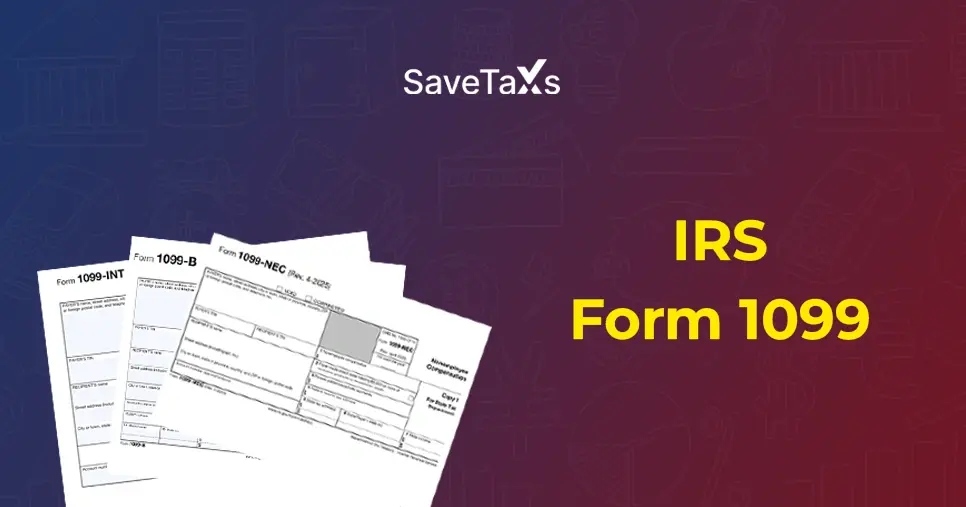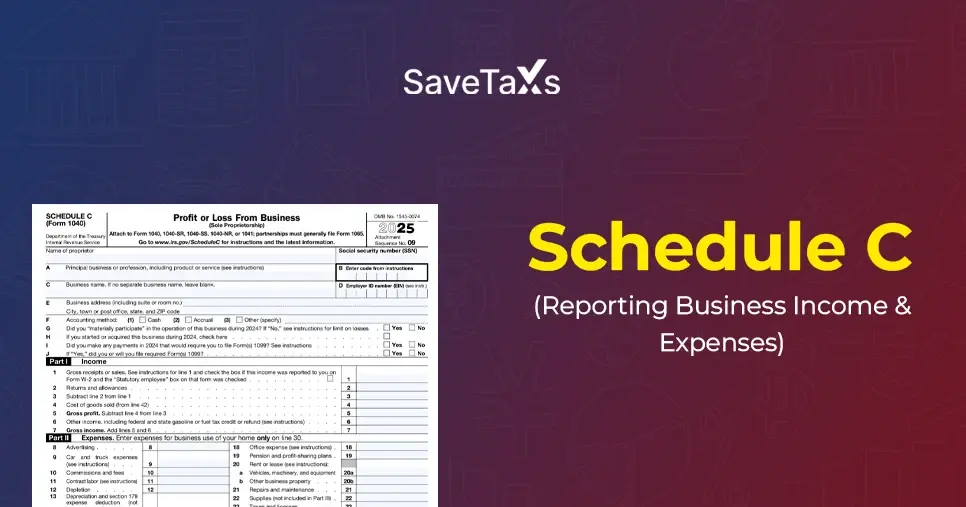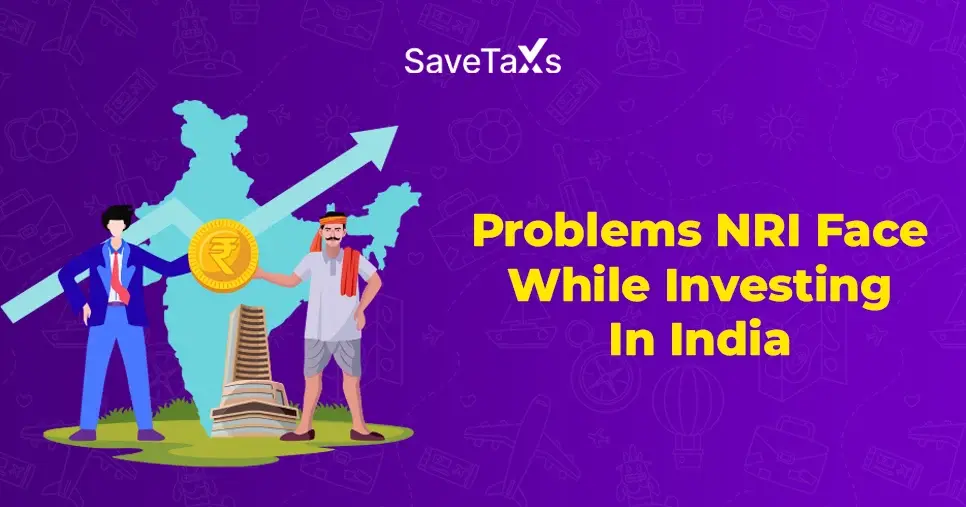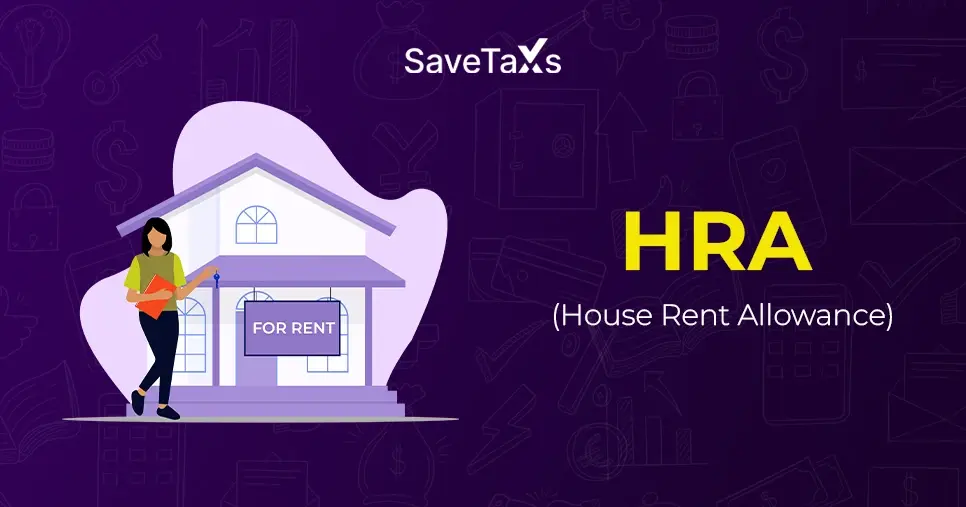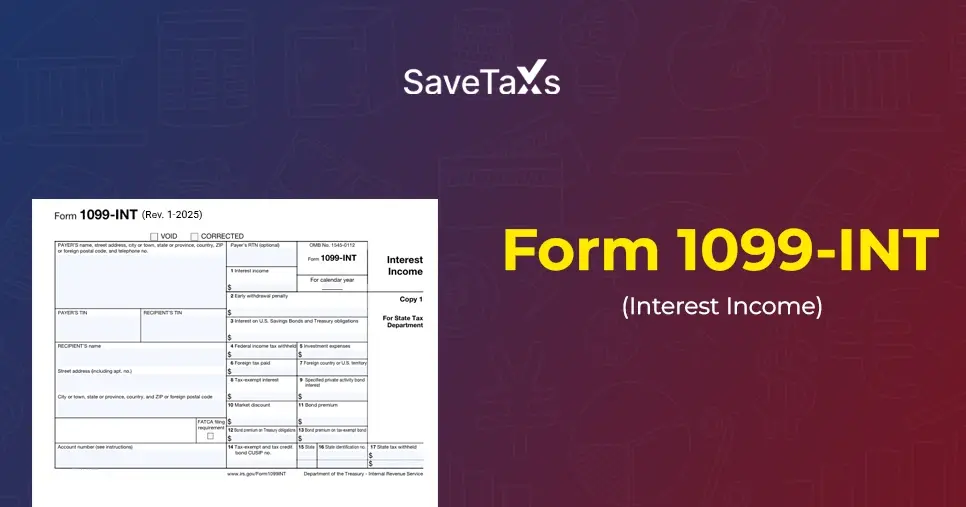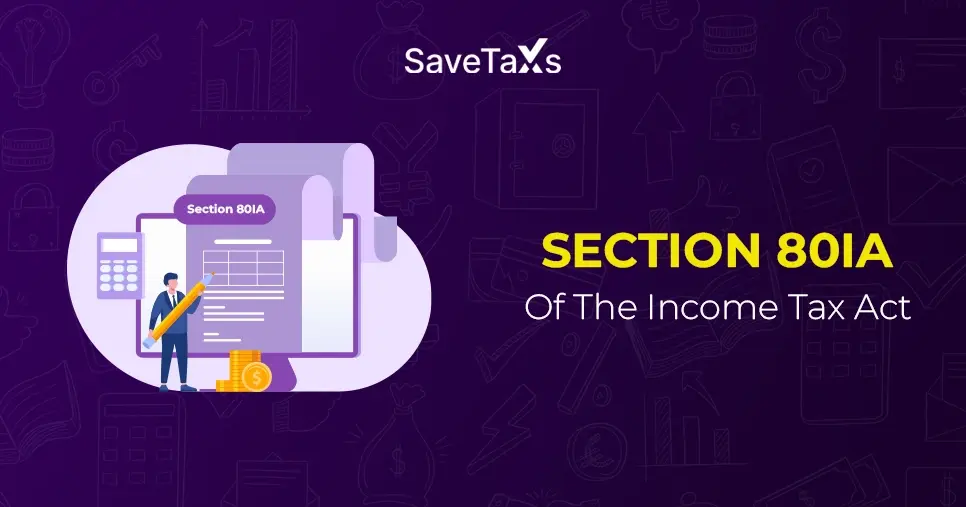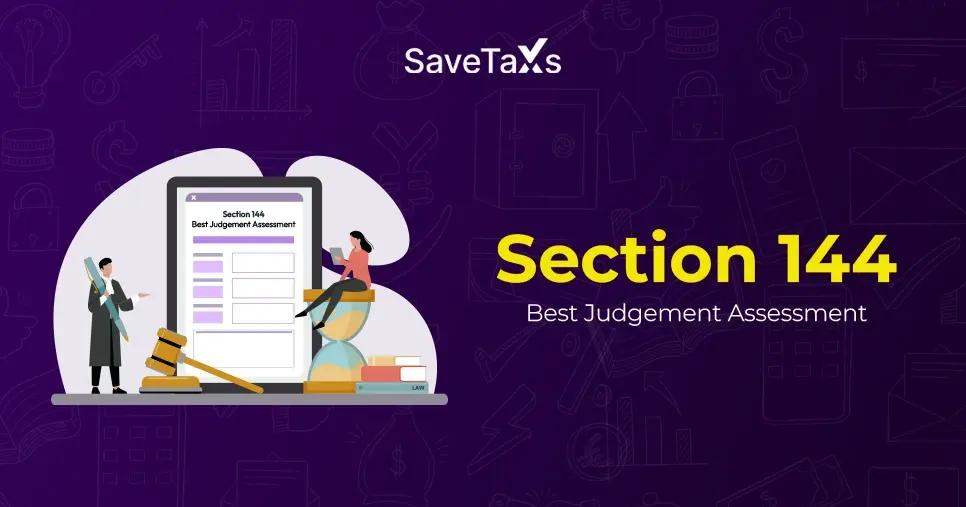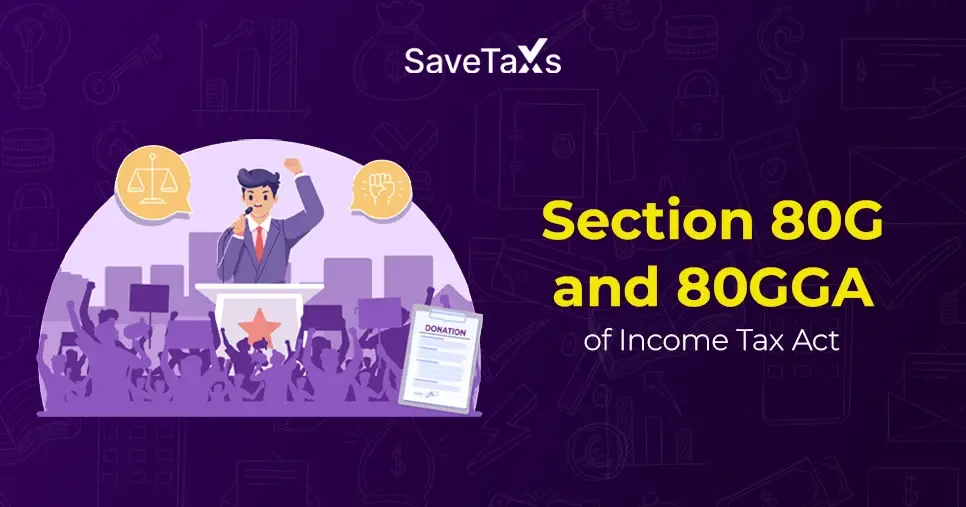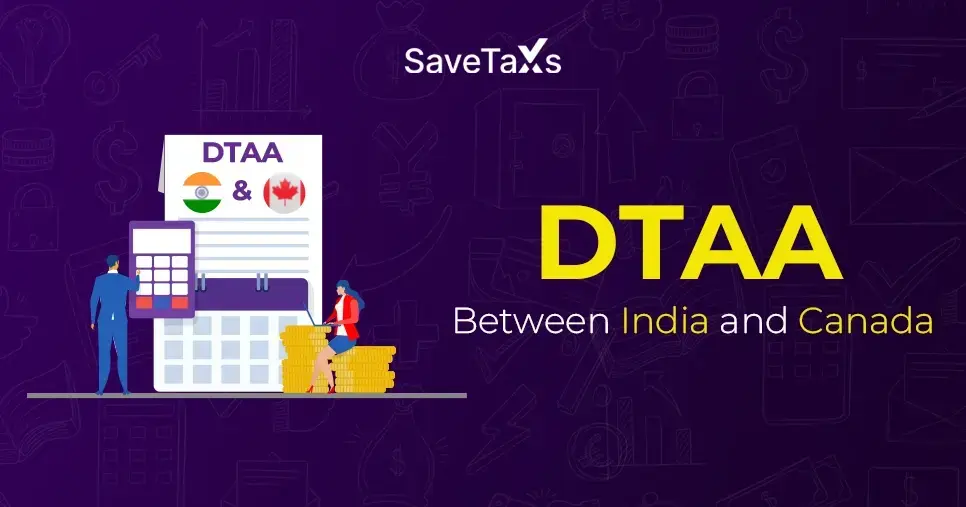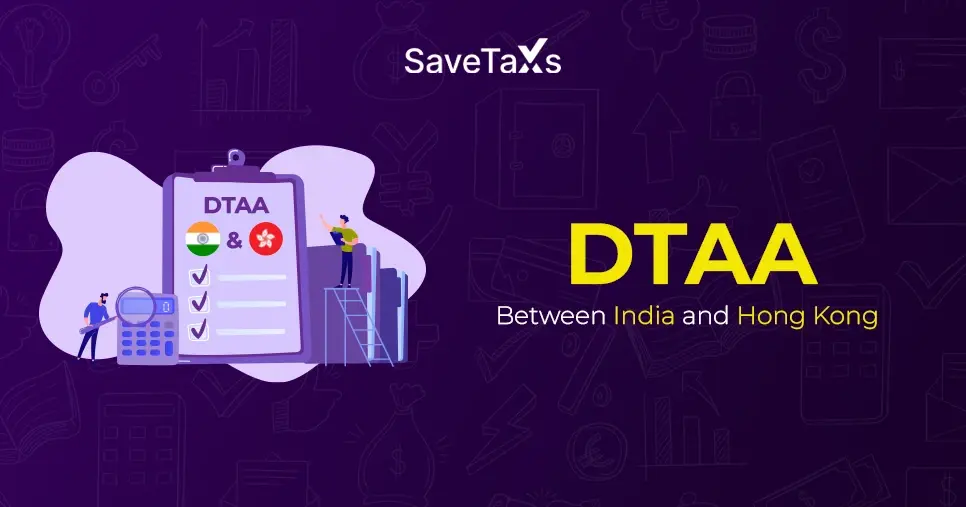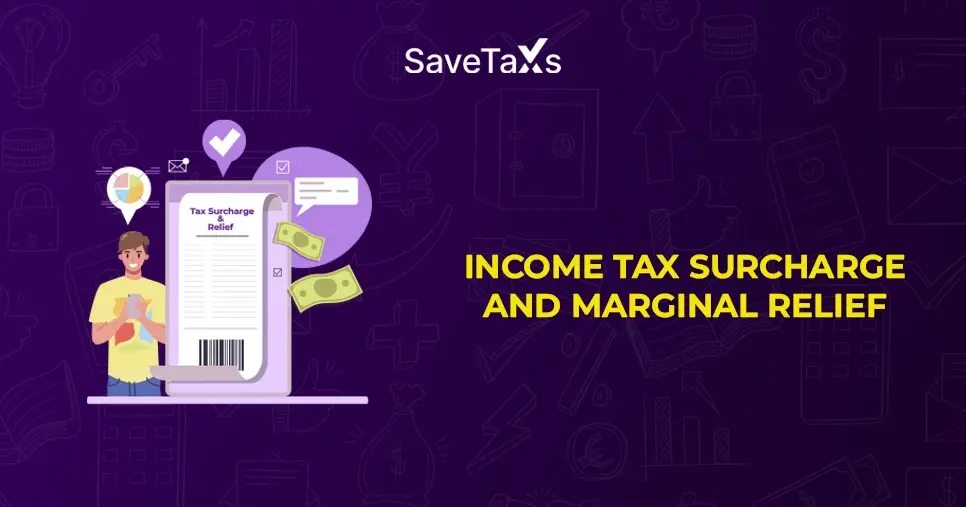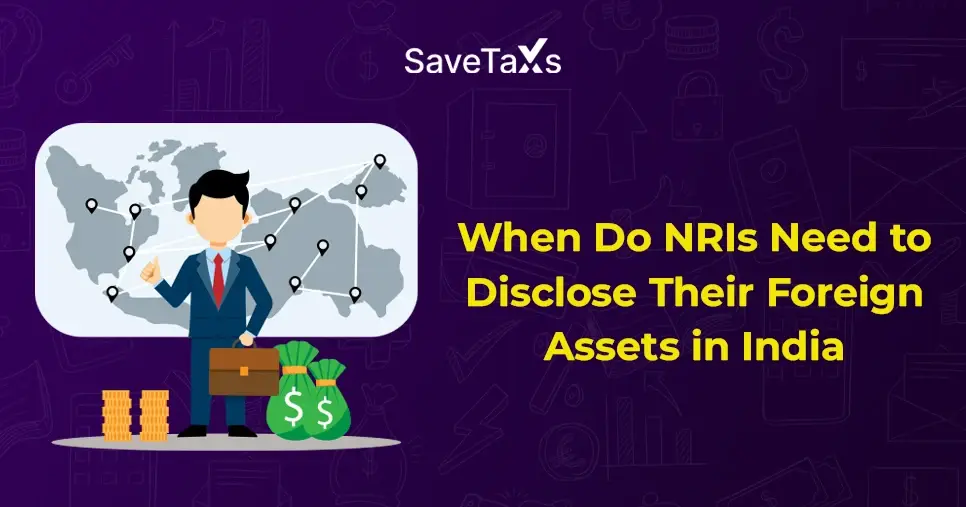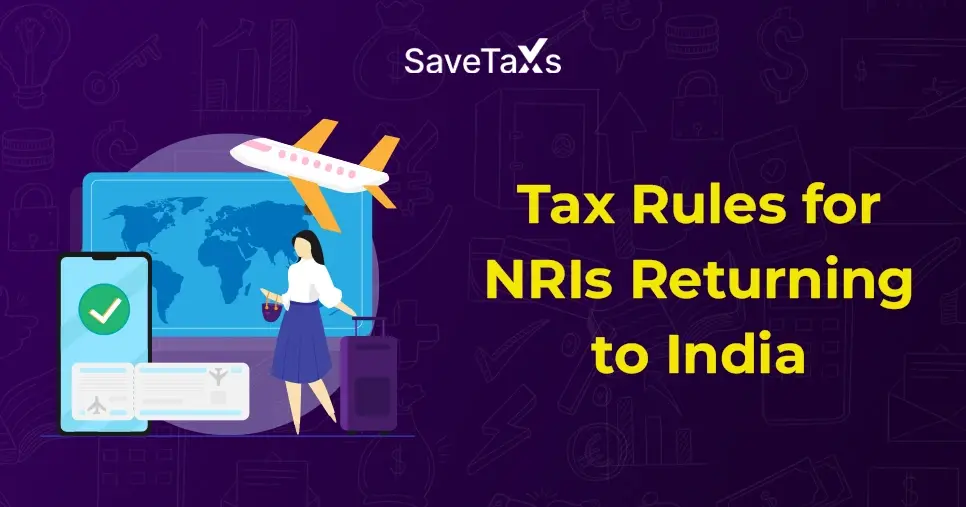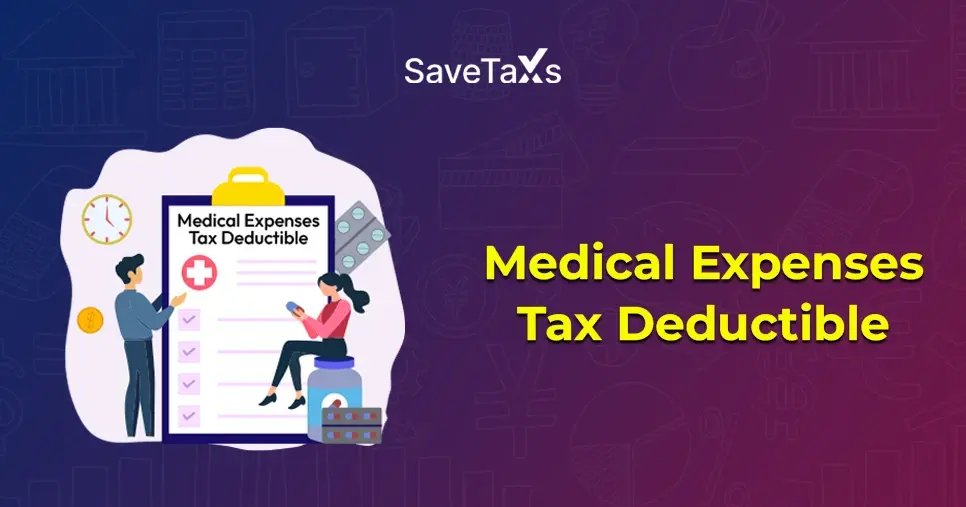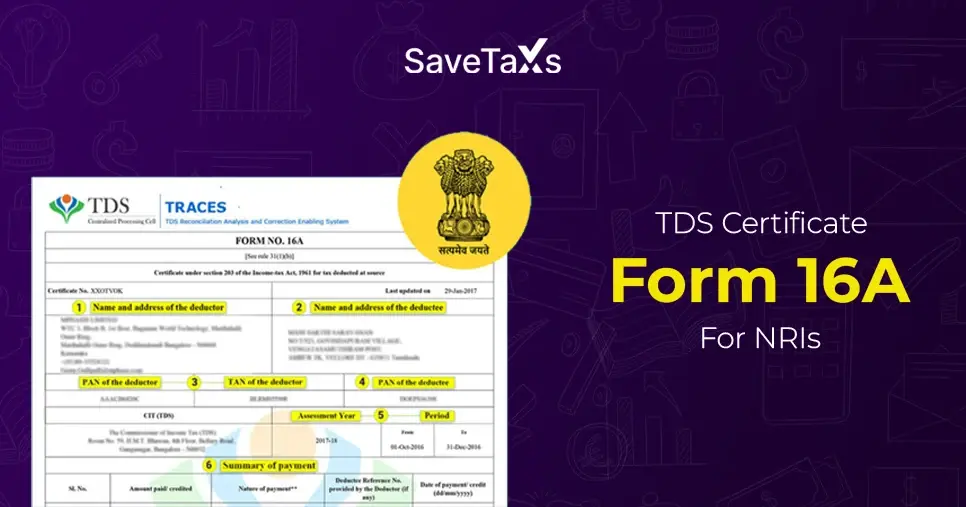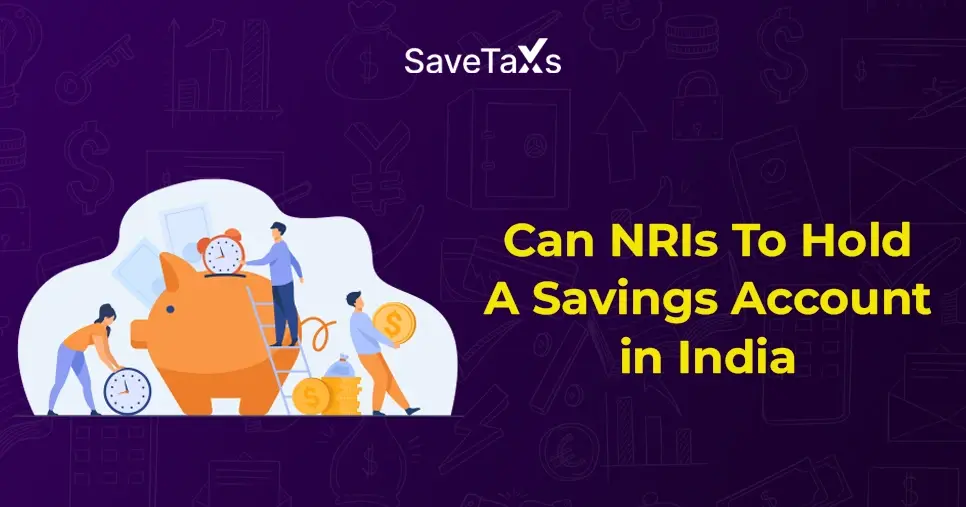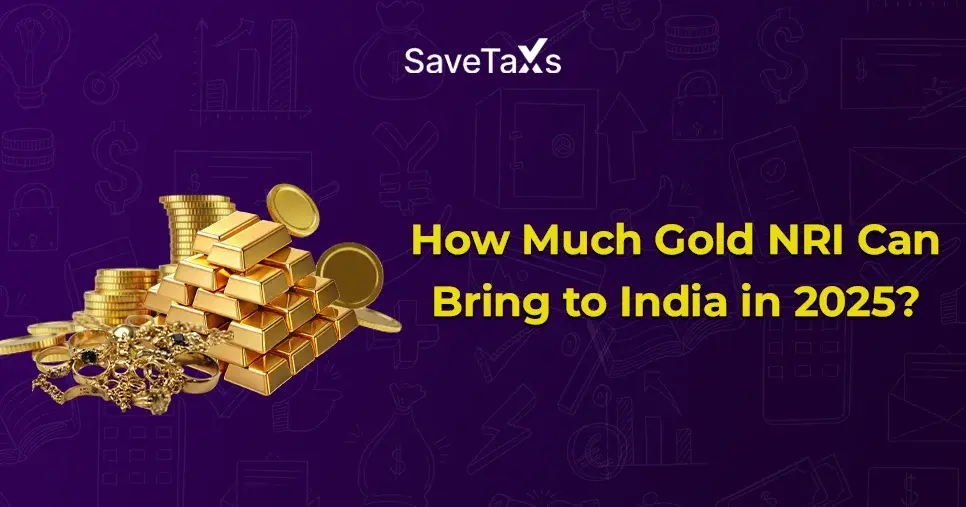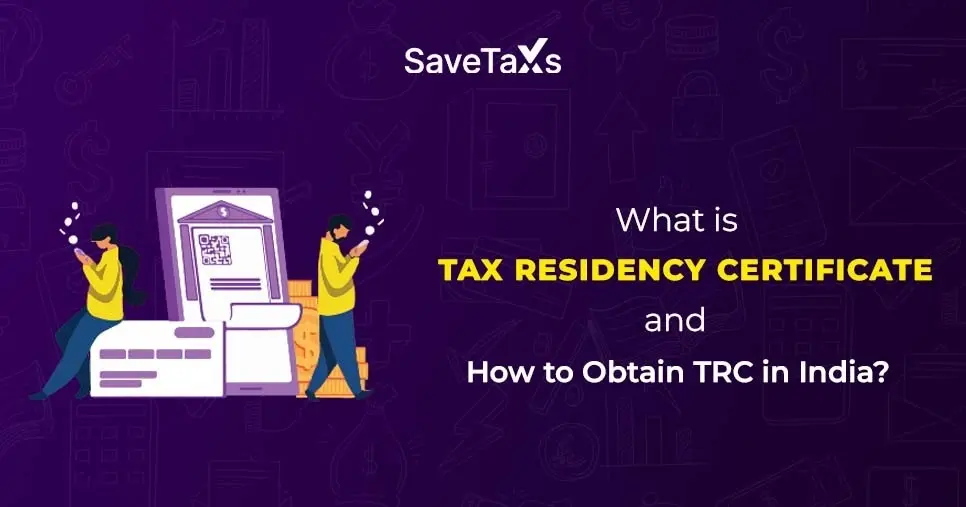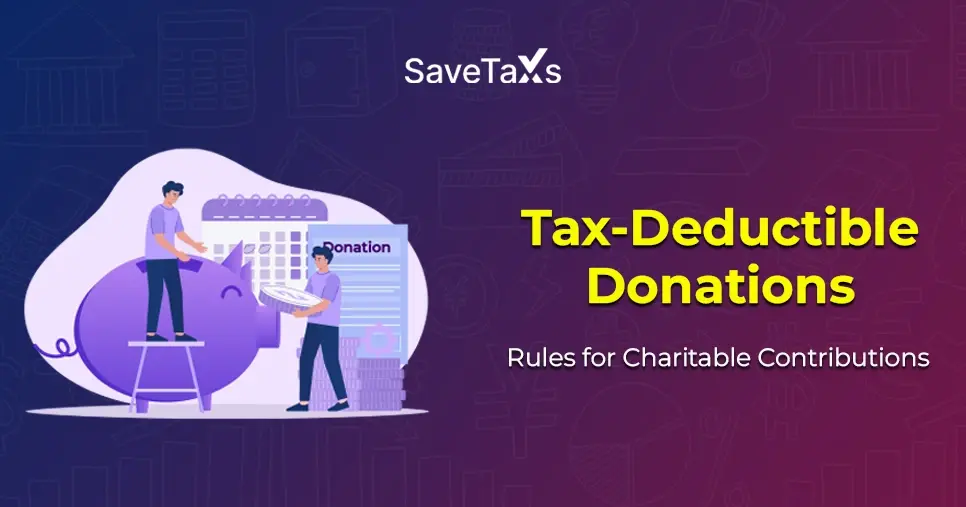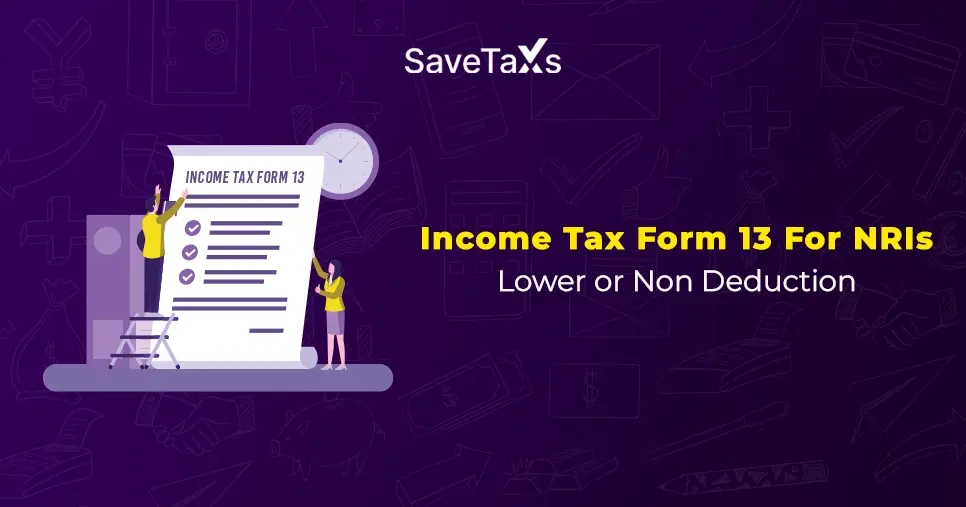1099 Form and its varieties are used to report taxable income to the Internal Revenue Service (IRS). Parties who issue these income payments are responsible for notifying the IRS that the transaction has taken place. They do so by providing a 1099 Form to the IRS.
The IRS will then compare the taxpayer's tax return to the information presented on any Form 1099 under their name and their tax identification number.
Cases where Form 1099 is not reported to the IRS are denied with a full audit. The party that is issuing Form 1099 will send a copy of the form to you, and that is how you will know that Form 1099 has been submitted to the IRS in your name and taxpayer identification number (TIN).
In this blog, we will understand everything around Form 1099, including what the form is for, when you will receive it, and how the information presented on that form will impact your tax return.
Key Takeaways
- IRS Form 1099 meaning a collection of forms that is used to report different types of income payments that are not from an employer.
- The different types of income payment include payments made to self-employed individuals, gambling winnings, royalty rents, and more.
- If you are working as a self-employed individual, such as a freelancer or independent contractor for a company or business, and getting paid in return. Then, in such a case, your income is likely to be reported on Form 1099.
- You can expect to receive most of your 1099 Form by 31 January. These forms will report the recurring yearly income payment to you.
The IRS 1099 Form is an information tax return form. 1099 Form used for reporting income payments made in situations such as investments, rent, freelance work, real estate, online transactions, and more. Different 1099 Forms report different types of income to the IRS.
In other words, the IRS 1099 Forms are a group of tax forms that report the payments made by businesses or individuals to a self-employed individual. Such individuals are independent contractors, freelancers, and more.
Now, the party paying is responsible for filing out the Form 1099 accurately. Then, a copy of the completed Form 1099 is sent to both the IRS and the payee. In a few cases, the copy is also sent to the payee's state taxing authority.
Please ensure that, depending on what has happened in your financial year and life, you can get one or more types of tax form 1099. Additionally, the income reported on Form 1099 is different from the income on your W-2 Form.
IRS states that the payers must provide most of the 1099 Forms by January 31. In exceptional cases, the date is scheduled for February 15.
The following are common scenarios in which an individual may receive a 1099 Form in 2025.
- An individual can receive Form 1099-NEC if they have earned $600 or more as non-employee compensation from a business/company, or a person.
- An individual received Form 1099-MISC if they have earned $600 or more in royalties or rent payments.
- An individual received Form 1099-G if they received a state or local tax refund during the review years.
Similarly, if a business or a company paid an independent contractor, freelance, or other non-employee individual $600 or more in the 2025 tax year. Then that business or company must send them Form 1099-NEC to the payee.
Note: For the start of tax year 2026, the number of Forms 1099-MISC, Forms 1099-K, and 1099-NEC is increased to $2000. Based on inflation, the threshold keeps increasing each year.
There are various types of 1099 forms available to report different types of income payments made between a payer and the payee.
Out of the various 1099 forms, one of the most popular is the 1099-NEC Form. This form is used for Non-employee Compensation Payments. Meaning if you are a self-employed individual, such as a freelancer or an independent contractor, you can receive a Form 1099-NEC. This form will have the payments made to you throughout the years from the respective payer (the one who sends the form).
Payers who are making payments below the set threshold for Non-Employee compensation payments are not required to file the 1099-NEC. However, if the payer withholds any tax amount from the payments, then they can file Form 1099-NEC, if they wish.
But on the other hand, the payee is still required to report that income on their tax return even though it is less than the threshold amount.
The due dates for the various Form 1099 tax forms differ. For example, the due date of Form 1099-NEC is January 31. If January 31 is not a business day, the due date is scheduled for the next business day.
If you are sending any of the 1099 Forms, please note:
- Most of the 1099 forms are due to be received by 31 January.
- If you are mailing the 1099 form to the IRS, you have to send it generally by February 28 (postmarked by this date).
- Forms 1099-NEC are due to both the IRS and the recipients by 31 January, be it electronically or paper filed.
The payer parties must send these forms to the payee early in the tax season. This gives the payee time to file their income tax return. This further allows the IRS to have evidence of the income the payee received during the tax year.
One of the most commonly used types of 1099 forms is 1099-NEC and 1099-MISC. In the table given below, let us talk about both the commonly used 1099 Forms.
| Form Name |
What it is used for |
An Example |
Filing Due Date |
| 1099-NEC: The Nonemployee Compensation Form |
This form is used to report the non-employee compensation. This includes income earned as a freelancer, an independent contractor, or a self-employed individual. |
Worked as a freelancer, delivery person, rideshare driver, or other type of gig worker. |
Due date for the Recipient: January 31.
Due Date for the IRS: January 31. |
| 1099-MISC: Miscellaneous Information |
This form is used to report payments like prizes, royalties, and awards. Additionally, it is used to subsidize payments for medical and health card expenses, dividends, crop insurance proceeds, and other similar items. |
Received a payment of rent for your leased property. |
Due date for the recipient: February 1. It can also be February 16 if the substitute dividends and the tax-exempt interest payments are reported by the broker or the gross proceeds, which are paid to the attorney. |
Prior to 2020, business owners relied on Form 1099-MISC to report non-employee compensation. Then, from the start of 2020, the IRS reintroduced a separate form to report non-employee compensation, which is 1099-NEC.
This change was made to provide separate filing deadlines for payments made under the non-employee compensation category. Payments that are reported in Form 1099-MISC have different deadlines.
Non-employee compensation includes payments made to a person who is not an employee for the services they have provided. Such individuals are commonly referred to as independent contractors, freelancers, or gig workers.
Such individuals can typically control or direct the outcome of their work as they desire, except for what will be done and how it will be done. Such workers are required to pay the self-employment taxes as well.
Whereas for an employee, the compensation you receive is reported on Form W-2.
In a nutshell, Form 1099-NEC is used to report nonemployee compensation. Whereas, from 1099-MISC reports other types of miscellaneous income.
There are other types of 1099 forms made for a specific financial purpose and reporting requirement. Each of the documents mentioned below has a particular purpose and a specific due date.
1099-A: Acquisition or Abandonment of Secured Property
What it is for: You can get this Form from your mortgage lender. It is received in a case when the lender has either canceled all or some of your mortgage while your property is being foreclosed.
Additionally, you can also get this form if you have forfeited the ownership of your property. Another case would be where you had sold your property in a short sale.
An Example: Your lender foreclosed the house, which in turn cancelled your mortgage.
Filing Due Date:
- To Recipient (Borrorwer): January 31.
- To IRS: February 28 for the mailed paper return and March 31 for e-filed online via tax software.
1099-B: Proceeds from Broker and Barter Exchange Transactions
What it is for: This form is used to report sales of bonds, stocks, derivatives, or other securities. These sales can be made either through one or several different brokers in a tax year.
An Example: An individual sold stocks in a brokerage account.
Filing Due Date:
- To Recipient: February 15 (March 15 for reporting by members or trustees of widely held fixed investment trusts).
- To IRS: February 28 for the mailed paper return and March 31 for e-filed online with tax software.
1099-C: Cancellation of Debt
What it is for: This form is used for agreeing with an entity to negotiate a debt cancellation with them.
An Example: You agree with the lender to cancel all or a part of your mortgage.
Filing Due Date:
- To Recipient: January 31.
- To IRS: For the mailed paper returns, it is February 28, and e-filed online through a tax software is March 31.
1099-DIV: Dividends and Distributions
What it is for: The form is for the receipt of dividends and/or certain distributions generally from investments.
An Example: Dividends from stocks.
Filing Due Date:
- To Recipient: January 31
- To IRS: For the mailed paper returns, it is February 28. If filed only through the tax software, the due date is March 31.
1099-G: Certain Government Payments
What it is for: This form is used for reporting unemployment compensation. Additionally, it is also used to report any state or local income tax refunds for the tax year.
An Example: CA state tax refund.
Filing Due Date
- To Recipient: January 31.
- To IRS: For mailed paper returns, it is February 28. March 31 is when the form is e-filed.
1099-INT: Interest Income
What it is for: For receipt of interest payments, there are chances where you may or may not need to pay the Income tax on the interest. However, you may still need to include the information from this form on your personal tax return.
An Example: Savings account interest.
Filing Due Date:
- To Recipient: January 31.
- To IRS: February 28 for the mailed paper returns and March 31 for the forms filed online.
1099-K: Payment Card and Third Party Network Transactions
What it is for: The form reports the credit card payments and third-party payment processing received over the internet. Individuals must review them if they run a business, such as an online e-commerce store or another online business.
For the year 2024, the amount limit was $5000 with no cap on the number of transactions. Beginning in 2025, the threshold was increased to $20,000, as it was in 2023, with a limit of 200 individual transactions.
Ensure that there is no threshold for the payment card transactions.
An Example: payments that are reissued through credit cards compared to the tried-on payment providers. Such payment providers are PayPal and others.
Filing Due Date:
- To Recipient: January 31
- To IRS: February 28 for the mailed paper returns and March 31 for the forms filed online.
1099-LTC: Long Term Care and Accelerated Death Benefits
What it is for: This form reports the payments under a longer-term insurance contract.
An Example: Recorded amount from a long-term care insurance policy.
Filing Due Date:
- To Recipient: January 31.
- To IRS: March 31 if the form is filed online with tax software.
1099-OID: Original Issue Discount
What it is for: Form 1099-OID reports the value realized when you purchase a bond for less than its original face value and then sell it for the face value.
An Example: You have paid less than the face value for bidn invsmeenres. These were purchased through a brokerage.
Filing Due Date:
- To Recipient: January 31
- To IRS: February 28 for the mailed paper returns and March 31 if the form is filed online.
1099-Q: Payments from Qualified Education Programs (This is under Section 529 and 530)
What it is for: This form reports from a qualified tuition program and then the Coverdell Education Savings Accounts (ESAs).
An Example: You received a distribution from a Coverdell ESA and a 529 savings plan.
Filing Due Date:
- To Recipient: January 31.
- To IRS: February 28 for the mailed paper returns and March 31 if the forms are filed online.
1099-QA: Distributions from ABLE Accounts
What it is for: This form provides information related to distributions from Achieving a Better Life Experience (ABLE) accounts.
An Example: An individual who has received a distribution from an ABLE Account.
Filing Due Date:
- To Recipient: January 31
- To IRS: February 28 if sent through mailed paper returns and March 31 if filed online.
1099-R: Distributions from Annuities, Pensions, Retirement or Profit-Sharing Plans, Insurance Contracts, IRA, etc.
What it is for: This form is used to report distributions of retirement benefits of $10 or more.
An Example: You received a distribution from your pension plan.
Filing Due Date:
- To Recipient: January 31
- To IRS: February 28 for mailed paper returns and March 31 if filed online.
1099-S: Proceeds From Real Estate Transactions
What it is for: The form reports gross proceeds from the exchange or sale of the real estate. This also used certain royalty payments.
An Example: You are selling your home.
Filing Due Date:
- To: Recipient: February 15
- To IRS: February 28 for the mailed paper returns and March 31 if filed online.
1099-SA: Distrubutoons from an HSA. Archer MSA, or Medicare Advantage MSA.
What it is for: In a case where an individual has used funds from a tax-advantaged health care savings plan. Then, the instructions administering the plan will report the distributions through this form.
An Example: Received distribution from your health savings account.
Filing Due Date:
- To Recipient: January 31
- To IRS: February 28 for the mailed paper returns and March 31 if filed online.
SSA-1099: Social Security Benefit Statement
What it is for: This form is used to document the amount of benefits repaid and paid. Additionally, it shows the Medicare premiums, the federal taxes, and other amounts that are withheld from your benefits.
An Example: Received the social security benefit.
Filing Due Date:
- To Reccipient: January 31.
- To IRS: February 28 for the mailed paper returns and March 31 if filed online.
Despite not getting all your 1099 forms, you are still responsible for paying taxes on all the sources of your taxable income. Doing so will avoid a legal bill from the IRS for owed taxes or possible penalties.
However, even by the deadline, you haven't received all the forms yet, and contact either the business or the person responsible for sending them to you. Drop a friendly reminder quite before the deadline.
Yes, Form 1099 can be filed electronically. In fact, filing Form 1099 electronically offers several benefits, such as:
- Fast processing time.
- Great Accuracy.
- Enhanced Security.
- You can even track the status of your tax return.
In a case where you received a Form 1099 with an error, reach out to the party that sent it to you. Ask them to correct the error as soon as possible.
Now, if you are an employer who has submitted a Form 1099 that has errors, then you have to file a correct form. To file the correct form, you can use the same mention you did for the original one. Once the correct form is filed, you can send a copy to the contractor or freelancer. They can further use the copy of the file for their personal income tax returns.
File Your Taxes With The Tax Expert
There is a possibility that the Form 1099 is a good enough reason for software and tax professionals to come into the picture.
If you get a Form 1099 and want to report your tax returns further, it is worthwhile to get in touch with a Tax Expert.
Savetaxs is a leading name in the US taxation industry, and we have now helped thousands of US citizens and residents file their taxes and tax forms accurately and meet the deadline.
Our experts provide end-to-end assistance, meaning from hearing your case to providing tailored tax strategies to ensure you get the maximum benefits while filing your taxes. Connect with us because Savetaxs serves its customers 24/7 across all time zones.
Note: This guide is for information purposes only. The views expressed in this guide are personal and do not constitute the views of Savetaxs. Savetaxs or the author will not be responsible for any direct or indirect loss incurred by the reader for taking any decision based on the information or the contents. It is advisable to consult either a CA, CS, CPA or a professional tax expert from the Savetaxs team, as they are familiar with the current regulations and help you make accurate decisions and maintain accuracy throughout the whole process.
 India
India
 USA
Tax Consultancy Services
USA
Tax Consultancy Services